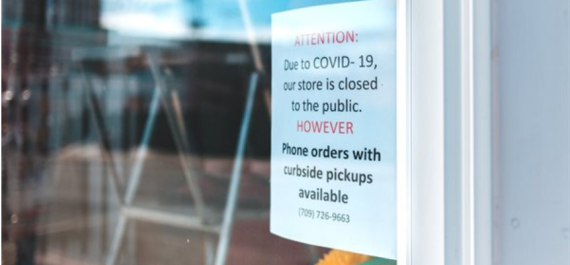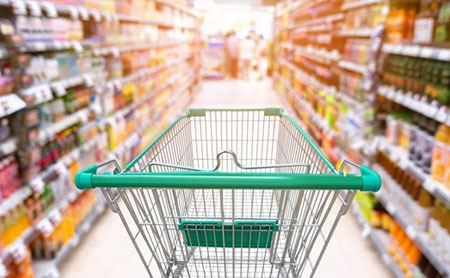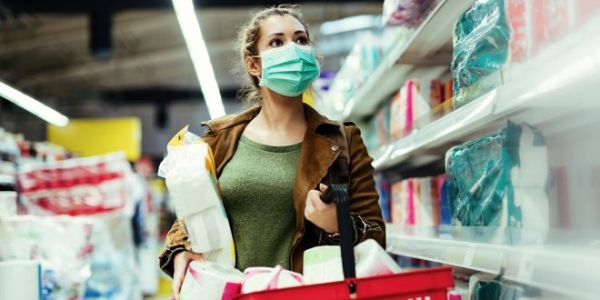If there's one thing Covid-19 has shown us, it's that the world can be shaken without notice. As a result of the country-wide lockdown, there has been an almost immediate shift from traditional methods of business and retail to a world that's completely online.
This proves that technological flexibility is fundamental in remaining relevant in a fast-changing world. While digesting the recent events and embracing a new reality and outlook on the future might seem challenging right now, adaptability is probably the most important trait any business can have at the moment.
Here are the four most important digital transformations we are likely to see in the coming months and years:
Mass adoption of online shopping
The coronavirus has pushed South African e-commerce forward many years in less than two months. According to a recent article on MyBroadband, South African food retailers have seen a 700% increase in web traffic volumes.
For many South Africans, online shopping has become the new norm during the pandemic. As behavioral patterns we repeat most often become etched into our neural pathways, new habits are formed. Even individuals who might not usually interact online on a daily basis, such as the elderly, have had no choice but to tech up to get their weekly supplies of essential goods.
Looking back to previous far-reaching Black Swan events, it's safe to say they have been both havoc-wreaking and accelerating. The 2003 SARS epidemic, for instance, threatened Alibaba’s survival but was recognised later as the watershed moment for the internet in China.
At the time, the company was a startup with 400 employees. During the health crisis, Alibaba’s development team worked from Jack Ma’s apartment to finish a consumer-facing e-commerce platform, which could cater for the increased online demand for those quarantined at home.
“Overnight, everyone from your grandmother to your three-year-old niece seems to have become a banana bread baking expert, TikTok star or living-room workout fitfluencer. According to Matthew Leighton, spokesperson from OneDayOnly.co.za. the oldest shopper on record at the site is 90 years old, proving that you’re never too old to start, and there’s no bad time to make your first online purchase. The data supports the trend of increased online shopping. Leighton says that the e-tailer has seen a 40% increase in page views per user, and a 15% increase in size of baskets since the start of the lockdown period.” Source.
Product choices are changing
Every economic shock leaves a legacy. The habit-changing impact of the current public health crisis has been profound: Increased demand for e-learning, more consciousness around health, hygiene and nutrition, changes in working and commuting patterns. These are just some of the areas which have seen transformation.
According to an article by the Visual Capitalist, some of the top 100 fastest growing e-commerce categories across the US are bread machines, weight training machines, dog food, craft kits, yoga pants, ping pong and office desks.
Unsurprisingly, the fastest declining categories include suitcases, cameras, women’s swimwear and bridal clothing. While a vaccine is out of reach, consumers are going to make the most of their time spent at home. And this reflects in their shopping habits.
It's safe to assume that in the long-term and as life resumes to some degree of normality we will witness more permanent changes in consumer behaviour, especially with regards to the sustainability of food sources. While the pandemic has certainly been humbling and thought-provoking in our role and responsibility as humans, there has been an increased awareness and demand for environmentally sound products pre-Covid.
With Millennials, 'Generation Greta' and the 'Coronials' holding future-buying power, businesses have no choice but to align their products accordingly.
“In economic downturns, consumer demand for 'nice-to-have' products goes down as buyers focus on their more basic needs. Health, wellness and safety – products that fit into the lower parts of Maslow’s Hierarchy of Needs – become the top priority.” Source.
Companies will embrace omnichannel delivery
The recent spike of online shopping volumes has fast-tracked adoption of delivery methods other than traditional home delivery and accelerated several new business partnerships. After country-wide complaints about grocery deliveries taking days or even weeks following the unprecedented demand, South Africa’s supermarket chains improvised progressive delivery alternatives.
Woolworths recently launched a drive-through Click and Collect option, allowing customers to order online then drive to a designated parking spot where Woolworths staff conveniently place the shopping straight into the boot.
Pick n Pay curtly partnered with tech startup Bottles earlier this month and re-engineered the Bottles app to facilitate grocery delivery while transforming physical stores into mini distribution centres.
Uber launched Uber Direct, an on-demand and scheduled last-mile delivery solution. Businesses and organisations can use Uber Direct to move goods within their supply chains as well as between locations to better balance supply and demand.
Rain, South Africa’s unlimited data network, has teamed up with Click and Collect solution Pargo to make rain SIM cards available at over 100 pick-up points in select Clicks stores. This new channel offers customers a convenient, instant way to pick up a rain SIM card when they’re out shopping for essentials during South Africa’s Covid-19 lockdown period.
Reduced store time, quick turnaround times, cashless payments and convenience are just some of the benefits these frontline stars have achieved.
Covid has shown us that omnichannel is not only retail-best-practice but a crucial requirement to distribute capacity and risk. With consumer behaviour facing a permanent change, companies will do well with an agile omnichannel approach which seamlessly integrates online and offline channels.
“People will still look for more comfortable desks and chairs to work from home. They want faster laptops for better efficiency now they are working remotely. These are some of the things people will be searching for as time goes on, and businesses must optimise their online presence to cope with the traffic they need for future success. Physical stores may contract in size in the near future as people opt for omni-channel engagement, where for instance the customer shops for a shirt online and just goes to the shop to try it on or to pick it up. Shopping is not going away, it will just be digital.” Source.
The future of payments
There is new awareness around the hygiene of payments due to the potentially harmful microorganisms that live on cash and ATMs. Shoppers are switching over to cashless payments and digital currency wherever possible.
According to The Financial Brand, smartphone adoption has long exceeded critical mass. 1,8 billion people worldwide own a smartphone but do not use a credit or debit card. Experts agree AC19, we will see a breakthrough of e-payments. One of the fastest-growing wallet and communication platforms in China is Wechat, which already makes up 40% of mobile payments.
Meanwhile, Snapscan has been around for approximately seven years and many South Africans have grown fond of the convenient cashless QR code enabled mobile payment app. It took a health crisis and the need for contactless payment solutions to see SnapScan make its way into traditional brick and mortar stores on a large scale. The latest adopter of Snapscan is popular grocery chain Pick n Pay which was also the first major retailer in South Africa to introduce contactless 'Tap & Go' card payments.
“Physical money currently acts as a vector for the virus’ spread whereas technology makes payments possible and safe. Governments and startups across Africa are implementing measures to shift payment transactions toward mobile money and away from cash, as recommended by the World Health Organisation.” Source.
Companies will spend bigger budgets on automation and AI
Once retailers have recovered from the cash flow stifling effects of the crisis we are expected to see more automation in retail which will ensure seamless selling and delivering during times of crisis with the goal of keeping humans safe while machines do the work. An increase in artificial intelligence (AI) can mean an increase in drone deliveries and automation of warehouse processes as well as the monitoring of emerging trends that human analysis would miss.
While the idea of robots in retail spaces might not have appealed to consumer sentiments in the past, it's likely that people will feel more amicably towards them post-Covid, especially if they could work in jobs that are risky or unhealthy for humans.
“The robotic rise can be seen in two key areas: fulfillment and in-store. As an example, Ocado, Britain’s leading online grocer, has had to stress-test an experimental program to automate its warehouses. After seeing an initial crash due to unprecedented demand when the Covid-19 crisis hit, the retailer is now using robots to pick and pack customer orders. Meanwhile, according to reports, retailers including Walmart and Amazon have already implemented mobile robots in their retail stores and warehouses to handle such essential functions as materials handling, inventory tracking and cleaning.” Source.
Article Source: https://www.bizcommunity.com/Article/196/394/203249.html





